Although some of my readers are from around the world and warmer places, many of us have endured an extra long, cold and grey winter. In fact, there is still about 3 feet of snow in my yard! But, the hint of spring is finally in the air here in Idaho, and I can’t wait to get out my plein air pochade ‘toy’ box!
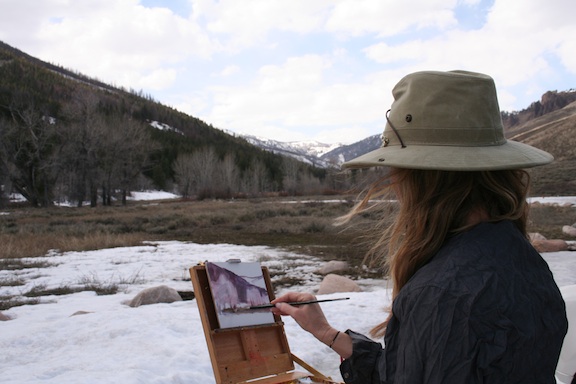
I am willing to bet, many of you plein air painters are feeling the same way. Nevertheless, some artists might feel blocked or intimidated when making the transition from the comforts of their studios and out into Mother Nature’s studio – whether in the city or the country. Below are 10 tips written by my friends at ArtBistro to help get us all get motivated and ready for some outdoor, en plein air painting.
Guest author: ArtBistro. The following article was originally posted on ArtBistro.Monster.com
1. You will have to do deal with your natural self-consciousness.
Most people don’t enjoy looking and feeling conspicuous. Even exhibitionists prefer blending in most of the time! So you need to talk yourself into a willingness to be seen, watched, pointed at, gawked at, criticized, and all the rest. You may turn out to be much more invisible than you fear—but if you aren’t, so be it!
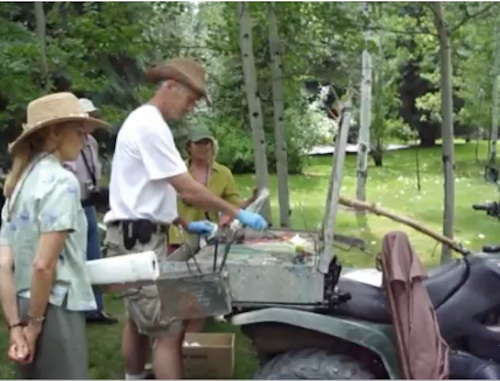
2. You will have to deal with a vast amount of visual data.
When you’re in front of your canvas while plein air painting, you have only whiteness to look at, which can be its own problem. But that’s a very different problem from the staggering amount of visual material available to you as you wander in the world. Wherever you turn your head, there is more to see! Accept this reality and talk yourself into the belief that all this visual data is a special kind of abundance, not some sort of problem.
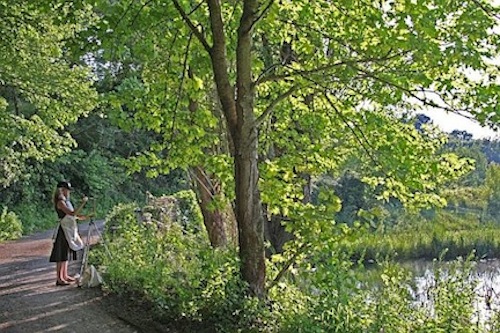
3. You will be obliged to make choices.
You can’t paint everything you see! Even if that were possible, what would be the point? Isn’t the artistry in the choosing? Choosing provokes anxiety and having to make strong, clear choices about what to paint may well raise your anxiety level. Be prepared for this anxiety, know what you’re going to do to combat it, and accept that you have no choice as an artist but to choose.
4. You need to bring a painting set-up that works for you.
This may take repeated tries, as the first set-up may be too cumbersome, the second set-up too meager, and so on. Learning how to feel comfortable en plein air is a process and there is no reason why you should nail your set-up the very first time. Consider your first tries experiments and learn from them.
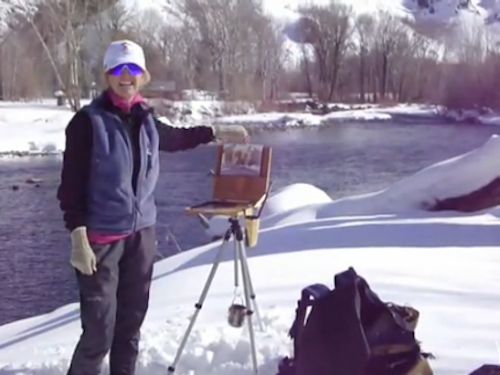
5. You will need to be clear about your intentions.
Are you planning to make finished paintings while you’re out? Or loose sketches? Or something in between, something that’s more than a sketch but that still requires work back at the studio? Maybe you actually don’t know your intentions—in which case, try to learn them as you go. Maybe you’ll discover that you can complete things on the spot and maybe you’ll learn that your real goal is to capture a sense of place and finish up at the studio. Learn as you go.
6. You will need to think about partners and buddies.
Would you enjoy going out with a friend? Maybe several of you might travel together? You don’t have to confine yourself to one way or the other—usually Van Gogh went out alone but sometimes he went out with Gauguin. Think through the pros and cons of painting en plein air with a buddy and if the pros tip the scale in their favor, find a painting partner.

7. You will need to schedule real time for the experience.
Most people are so busy nowadays that they can’t find three or four hours “out of nowhere” unless they consciously pencil those hours into their schedule. Look at your schedule and make some decisions about where you might find your en plein air time. If you can’t find the time, that means that in order to get en plein air painting onto your schedule you will need to rethink how you spend your time.
8. You will need to remind yourself of the joys of en plein air painting.
You may be focusing in your mind on the difficulties associated with it and by focusing on them have forgotten how joyful it can be to be out in the world looking, seeing, and creating. Think back to how much you’ve enjoyed sketching in parks and cafés. The studio is great—but so is the world. Remind yourself of its greatness!
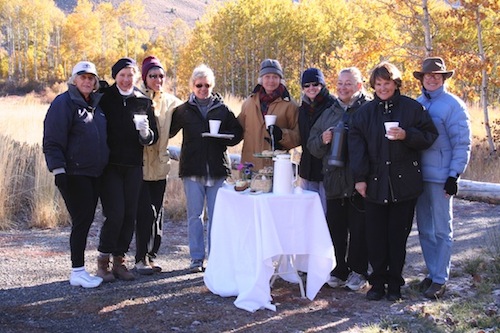
9. You will need to keep the process simple and not over-dramatize it.
It isn’t as if you’re going to the ends of the earth! We can easily talk ourselves into the belief that something is far more difficult than it really is. Have a quiet conversation with yourself, gather up a few things, go out, and find some fascinating vistas to paint. Don’t over-dramatize the difficulties!
10. You will need to have a conversation with yourself about the importance of en plein air painting to your creative life.
If in the course of that conversation you decide that it is more a romantic fancy or a “should,” let it go. But if you decide that it is central to your growth and something that matters to you a lot, honor your understanding of its importance and make sure that you get some en plein air painting on your schedule—and soon!
*****
Plein air painting is a wonderful pastime. I encourage you to get out there and try it! This discipline will improve your studio art dramatically. Please share your plein air tips with us in the comment section. We all learn from one anther! ~Lori
PS. Please, let’s meet on Twitter and my FineArtTips Fan Page.
You might enjoy some of these other articles:
How to Use Good Reference Photos for Landscape Painting
How to Build a Pochade Box from a Cigar Box
How to Interpret the Landscape in Paint
Plum TV Presents, “A Day in the Life of Artist Lori McNee”
Save Studio Space! How to Make Your Own Painting Racks
How to Pack For Painting – Tips for the Painter Traveling by Airplane or Car
7 Ways to Get Motivated in the Studio to Sell More Art








You also must be flexible..be prepared for changes in weather. Bring along raingear and layers of clothing if needed. Experiencing weather often brings something special to your painting.
Absolutely Amy! Weather play a huge role in the outdoor painting experience. It adds the mood and energy to the painting which is tough to replicate in the studio.
Thanks for the comment. Happy painting-
Lori
If you forget your turpentine, paint with a palette knife!! some of my best paintings happened this way. now I use weater ixable oil , but sometimes I forget the water. Thanks for all your tips.
Thanks for sharing these though and action-provoking concepts. 2 & 3 especially resonate with me, seeing the vast amount of visual data as an abundance, not a problem; and, being impelled to make choices.
Joseph Wood Krutch said it well in “A Desert Year”: “The rare moment is not the moment when there is something worth looking at but the moment when we are capable of seeing.”
Hi Randy, thanks for stopping by for a comment and for sharing Joseph’s quote. I have not heard that one before, and I find it inspiring and so true. I am glad you enjoyed this post and I hope to see you again.
Happy painting-
Lori 🙂
Good post Lori and timely. I can’t wait to get out of the heat here. lol
Hi Becky! Happy to see you stop by…it’s heating up up here too!
after 20 years painting with warercolor, I am at age 86 launching into water mixableoil painting. I’ll be using hardboard and birch plywood. Just has to tell somebody.
Happy to hear you have made the jump into water soluble oils! I love them and I bet you will too…enjoy
Hi Lori,
I have been struggling with oils.. I think I will try goache.. I thought i did and it drys out quickly. Any tips? Thanks.. your work is wonderful
Hello Deborah, thank you for stopping by. I don’t have very many tips on this subject. But, this gal paints with gouache https://www.finearttips.com/2013/04/a-beginners-approach-to-plein-air-painting/ You might like to try egg tempera https://www.finearttips.com/2009/12/luminous-egg-tempera-tips-from-a-master/ or water mixable oils https://www.finearttips.com/2009/10/water-soluble-oil-paints-facts-tips-why-i-use-them/ I hope this helps!